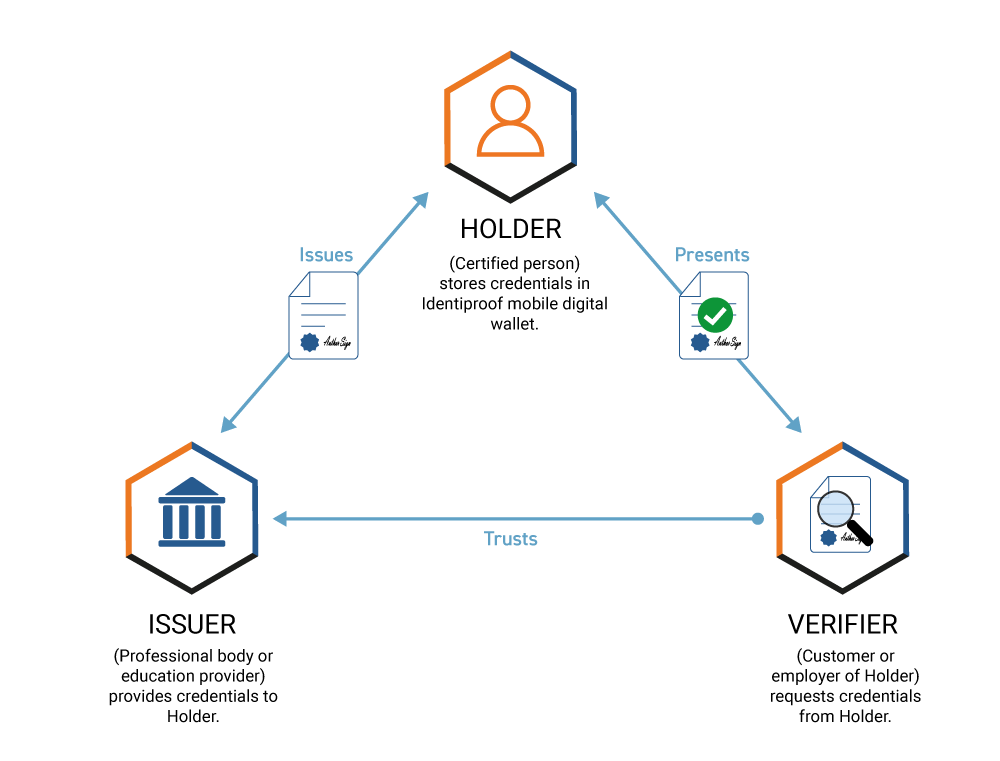What is a Verifiable Credential?
Digital credentials are the natural extension of digital identities and are electronic representations of an individual’s rights, qualifications, assets, records or capabilities that are tied to their identity.
Life creates more and more digital credentials and as this happens the opportunities for fraud, misrepresentation and crime also increase.
“Until W3C Verifiable Credentials, there was no accepted standard for how digital credentials could be verified online while maintaining privacy.”
Verifiable Credentials address existing issues when using
previous methods of identification:
- degrade
- storage space
- easily duplicated
- bought online
- difficult to verify
- expensive to make
- slow to distribute
- can get lost or stolen
- can be cloned
- open to phishing attacks
- brute force cracking
- can get lost
- often forgotten by users
- stolen from servers
The W3C Verifiable Credentials standard

To reduce fraud and improve privacy the W3C (World Wide Web Consortium) Verifiable Credential standard has been published. The standard describes ways for organisations to surmount the challenges above by issuing Verifiable Credentials to Holders, which preserve the Holder’s privacy, while providing Verifiers with security and a high level of assurance that the credentials are correct.
Proving documents are genuine, current and presented by the rightful information holder remains one of the biggest challenges for organisations. The possibility of forgery and misuse is the basis for much of today’s fraud and criminality. The use of verifiable credentials, stored on a holders’ smartphones, the centre of many people’s online lives, has solved the problem as credentials move from the physical world to the digital world.

Protecting the individual and the organisation
The recently ratified W3C Verifiable Credentials standard changes how organisations digitise and protect both the individual and the organisation. The standard is a global specification describing a privacy-preserving, space-efficient, and high-performance mechanism for issuing Verifiable Credential information.
The standard recommends a new data model for interoperability of identity technologies and represents a disruptive shift in future design options for digital systems. Going forward systems will need to demonstrate greater portability and user-centric digital identities, referred to as ‘self-sovereign’ or ‘decentralised‘ identities.
Published by the W3C (World Wide Web Consortium), the standard explores the creation, storage, presentation, verification and user-control of credentials. It sought solutions to:
- Self-Sovereign Identity
- Presentation of proofs by the bearer
- Data minimisation
- Centralised, federated, and decentralised registry
- Identity systems
The resulting Verifiable Credentials Data Model standard ensures credentials are digitally signed and extensible, i.e. new properties can be applied to the schema to suit any industry specific or application use.

Identiproof was designed by the co-author of the standard, Emeritus Professor David Chadwick, and is fully compliant with the W3C Standard. Identiproof provides organisations with all the benefits of the latest technology including the highest levels of security and privacy.
Find out how Verifiable Credentials can transform your business
CONTACT
- Crossword Cybersecurity Main Office
Capital Tower, 91 Waterloo Rd,
South Bank, London
SE1 8RT - 0333 090 2587
- www.crosswordcybersecurity.com

